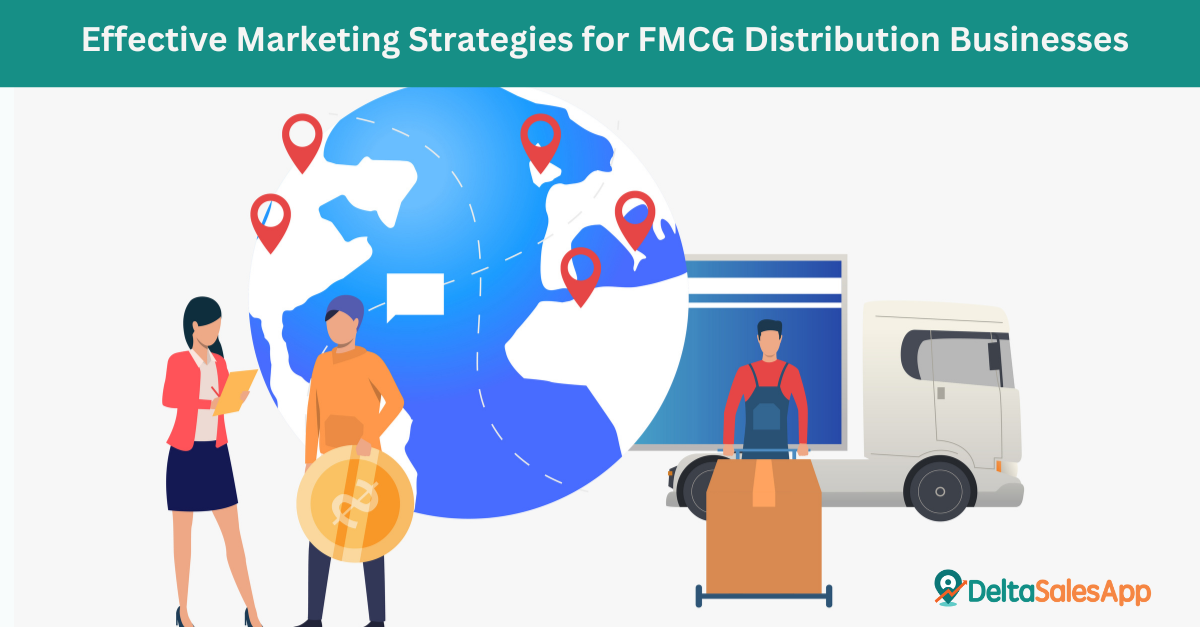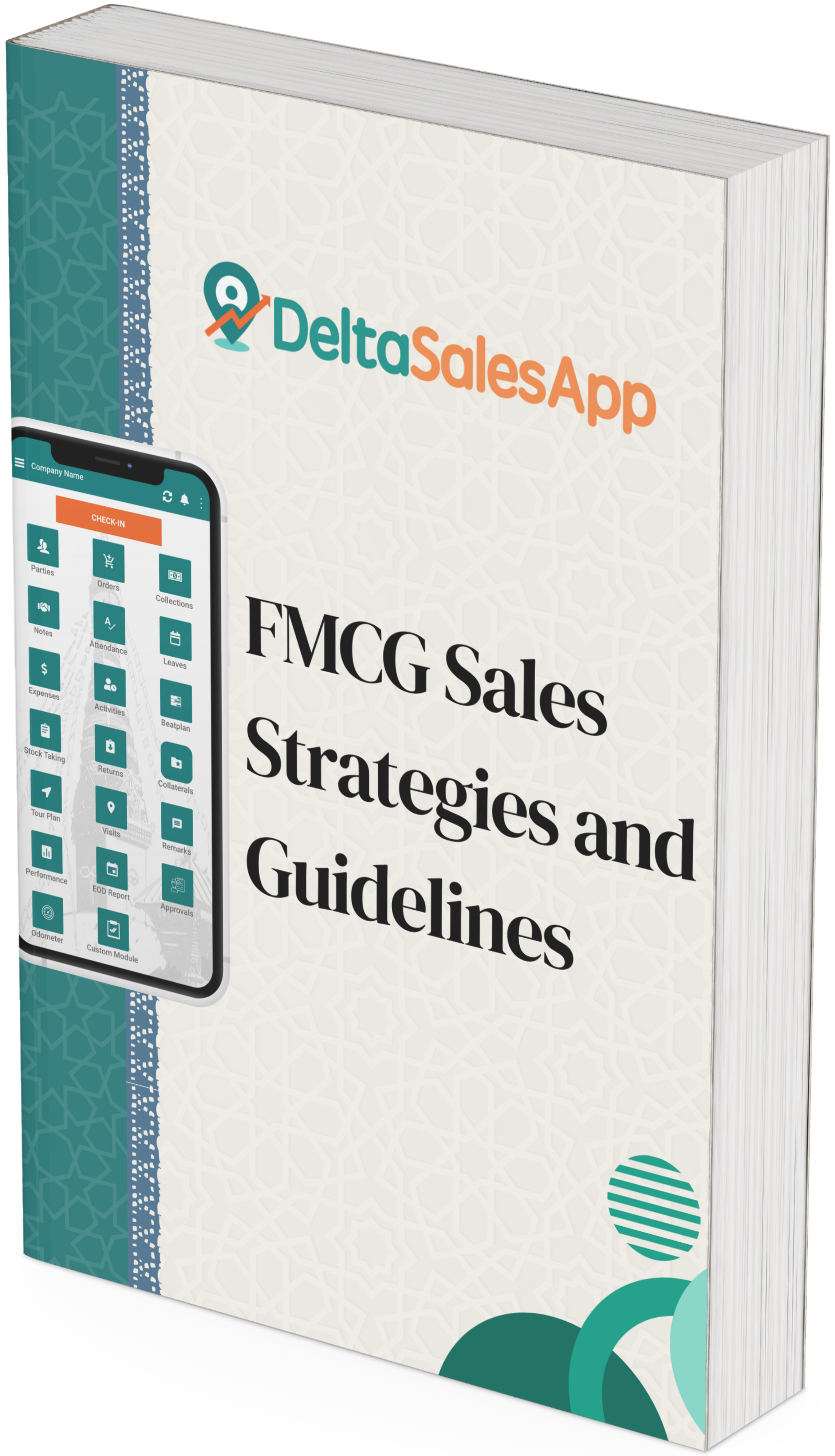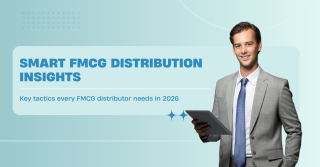Effective Marketing Strategies for FMCG Distribution Businesses

In the fast-moving consumer goods (FMCG) industry, effective distribution is key to staying competitive. However, it’s not just about getting your products into the hands of consumers—it's about crafting a robust distribution strategy, enhancing relationships with retailers, and leveraging modern technology to streamline operations and maximize growth. In this article, we will explore the most effective marketing strategies for FMCG distribution businesses, examining how understanding the FMCG landscape, addressing common pain points, and implementing the right tactics can set your business on a path to success.
Understanding the FMCG Distribution Landscape
Before diving into marketing strategies, it’s essential to have a clear understanding of the FMCG distribution landscape. The FMCG industry is one of the fastest-growing sectors globally, marked by the quick turnaround of products, price sensitivity, and high competition. The distribution process is fundamental, as it directly impacts product availability and accessibility for consumers.
Today’s FMCG distribution model is not only dependent on physical retailers but also on digital platforms. E-commerce, mobile apps, and social media are becoming more integral to the distribution process. This shift in consumer shopping habits, combined with the constant demand for quicker, more personalized services, requires distribution businesses to adapt quickly. To stay ahead, FMCG distributors need to cater to both offline and online consumers while ensuring efficient supply chain and inventory management.
Understanding these dynamics enables businesses to position themselves effectively in the market and tailor marketing strategies that align with consumer needs and preferences.
Crafting a Robust FMCG Distribution Strategy
Creating a strong distribution strategy is crucial to achieving business goals. The key to a successful FMCG distribution strategy lies in understanding where and how to reach the right consumers, ensuring timely delivery, and optimizing supply chains. Here are some essential elements to consider:
Market Segmentation: It’s crucial to understand different market segments based on geography, demographics, and consumer behavior. FMCG distribution businesses need to customize their strategies for urban, suburban, and rural areas, as well as for varying income levels and product preferences.
Multi-Channel Distribution: In today’s world, it's essential to blend traditional retail channels with online and mobile distribution platforms. Consumers increasingly prefer convenience and accessibility, and by offering your products on multiple channels, including e-commerce, you can capture a larger audience. This also includes working closely with modern retailers and partnering with online marketplaces like Amazon, Alibaba, and local e-commerce platforms.
Logistics and Inventory Optimization: Efficient logistics and inventory management are critical to ensuring your products reach customers on time and in good condition. Distributors need to establish a system that minimizes stockouts, reduces overstocking, and ensures that products are available in key locations when demand spikes. Technology, such as inventory management software, can help track inventory in real-time and predict demand based on sales trends.
Brand Consistency: Your marketing strategy should align with your overall brand message and values. Whether it’s eco-friendly packaging, sustainability, or promoting health-conscious choices, a clear and consistent message will help differentiate your brand in a crowded market. Ensure that every touchpoint, from retail packaging to online ads, reinforces your brand's identity.
Recognizing Common Pain Points of FMCG Distributors
The FMCG distribution process comes with several challenges. Recognizing and addressing these pain points proactively will help distributors streamline operations and improve profitability. Some common challenges include:
Supply Chain Complexity: The FMCG industry relies on complex supply chains involving manufacturers, wholesalers, and retailers. Managing this network effectively can become cumbersome. Delays in transportation, poor inventory management, and lack of synchronization among stakeholders can lead to inefficiencies.
Price Sensitivity: With tight margins and stiff competition, price is a significant factor in the FMCG sector. Competing on price alone can be unsustainable. Instead, it’s crucial to focus on value differentiation through product quality, brand loyalty, and offering unique product features or benefits.
Demand Forecasting: Accurate forecasting is essential for maintaining an optimal supply chain. Overestimating or underestimating demand can result in either excess inventory or stockouts, both of which negatively impact sales and profitability. Using advanced forecasting software powered by artificial intelligence (AI) can significantly improve accuracy and decision-making.
Regulatory Compliance: With regulations and standards varying by region, FMCG distributors must stay compliant with local laws regarding packaging, labeling, and transportation. A compliance failure could damage the brand’s reputation and result in legal issues.
Enhancing Relationships Between FMCG Distributors and Retailers
Building strong relationships with retailers is essential for FMCG distributors. Successful partnerships can lead to mutually beneficial outcomes, such as improved product placement, co-branding opportunities, and more frequent sales. Here’s how you can foster these relationships:
Effective Communication: Regular, open communication with your retail partners is essential. This includes informing them about product availability, promotional campaigns, and sales forecasts. Retailers value being kept in the loop about the products they stock.
Incentive Programs: Offering incentives to retailers—such as special pricing, discounts, or promotional support—can motivate them to prioritize your products over competitors. Consider providing retailer-exclusive offers or volume-based discounts to increase loyalty and sales.
Collaborative Marketing: Collaborate with retailers to run joint marketing campaigns, both online and offline. From in-store displays to social media promotions, working together helps boost visibility and sales.
Training and Support: Provide training to retailers about product features, selling techniques, and marketing tools. When retailers are well-informed, they can better promote your products to consumers, driving higher sales.
Leveraging Technology for Effective Distributor Management
Technology is a game-changer in the FMCG distribution business. Implementing the right tools and systems can enhance operational efficiency, streamline workflows, and improve overall performance. Here’s how distributors can leverage technology:
Distributor Management Software (DMS): A Distributor Management System (DMS) centralizes data, allowing businesses to track inventory, manage orders, and analyze sales trends in real-time. By offering visibility across the entire distribution chain, DMS tools help distributors manage logistics, forecast demand, and improve supply chain collaboration.
Automating Processes: Automation reduces human error and accelerates processes. From order processing to billing and inventory tracking, automation tools help reduce administrative burdens and increase accuracy. This enables distributors to respond to market demands faster and with more precision.
Data Analytics: Advanced data analytics can provide insights into consumer behavior, sales trends, and market conditions. By analyzing this data, distributors can refine their marketing strategies, optimize pricing models, and predict future demand patterns.
Mobile Applications: Mobile apps are essential for field sales teams. With mobile technology, sales representatives can access real-time data, place orders, track deliveries, and communicate with customers efficiently. This helps speed up decision-making and improves customer service.
Unlocking Growth Opportunities through Efficient Distribution Strategies
Growth in FMCG distribution comes from identifying and capitalizing on new opportunities. Whether through expanding into new markets, leveraging technology, or optimizing current strategies, there are always ways to accelerate growth:
Expanding Market Reach: Look beyond existing markets and identify new regions or untapped demographics. By conducting thorough market research, distributors can find growth opportunities in emerging markets.
Innovative Product Offerings: Stay ahead of consumer trends by offering innovative products that meet evolving needs. Whether it’s introducing a new flavor, health-conscious product, or an eco-friendly alternative, innovation keeps consumers engaged and drives sales.
Strategic Partnerships: Forge partnerships with local retailers, e-commerce platforms, and third-party logistics providers. These alliances can help expand your reach and improve supply chain efficiencies, positioning you for greater success.
Essential Tips for Running a Successful FMCG Distribution Business
Maintain Flexibility: The FMCG market is constantly changing. Stay agile and be ready to pivot as consumer demands shift or market conditions change.
Focus on Last-Mile Delivery: Optimizing last-mile logistics can reduce costs and improve delivery times. The faster products reach consumers, the more likely they are to repeat purchase.
Integrate Sustainability: More consumers are now environmentally conscious. Incorporate sustainability into your distribution strategy by using eco-friendly packaging, reducing waste, and adopting greener transport methods.
Invest in Employee Training: Ensure your team is well-trained on the latest technology, sales techniques, and product knowledge. A knowledgeable team contributes to better customer experiences and operational efficiency.
Therefore,In the competitive world of FMCG distribution, crafting an effective marketing strategy is essential for sustaining growth and staying ahead of the curve. By understanding the FMCG distribution landscape, addressing common pain points, leveraging technology, and nurturing strong relationships, businesses can unlock growth opportunities and build long-term success. Stay flexible, innovate constantly, and focus on delivering value to customers. With the right strategy in place, your FMCG distribution business can thrive in the fast-moving consumer goods market.
FAQs:
1. How can FMCG distributors improve customer relationships?
Building strong relationships with both retailers and consumers requires consistent communication, personalized marketing, and offering incentives. Distributors should listen to customer feedback and adjust strategies accordingly.
2. What role does technology play in FMCG distribution?
Technology enables distributors to optimize supply chains, manage inventory, forecast demand, and offer personalized marketing. Using advanced tools like DMS and AI can streamline operations and improve decision-making.
3. How can FMCG distributors reduce supply chain complexity?
Distributors can reduce complexity by implementing better logistics planning, using automation for inventory management, and adopting technology that provides real-time visibility into operations.
4. What challenges do FMCG distributors face?
Distributors often face challenges like managing fluctuating demand, handling inventory shortages, dealing with competition, and maintaining supply chain efficiency. Overcoming these challenges requires robust planning, technology, and strong relationships with retailers.
Alos, To know further you can follow blog article; Three Must-Watch FMCG Trends For 2024









